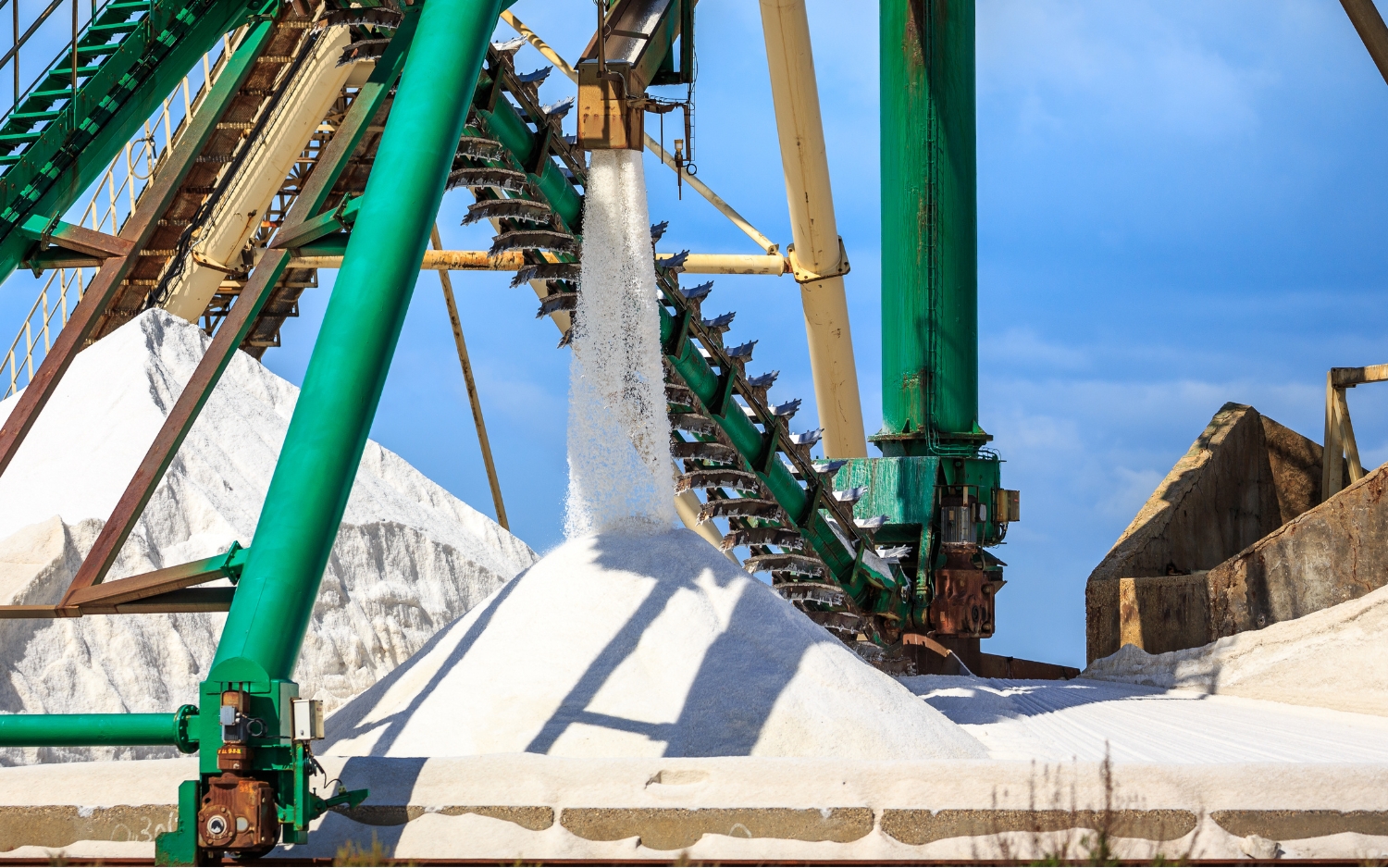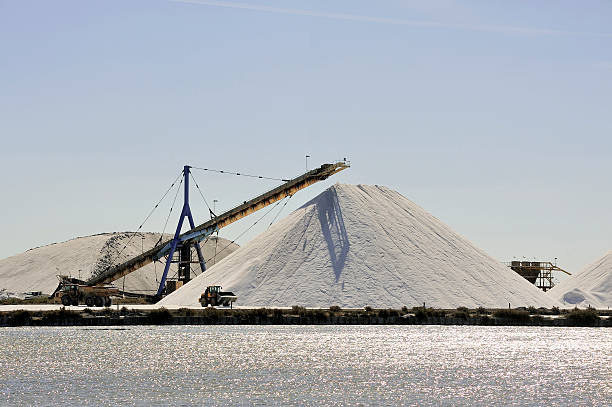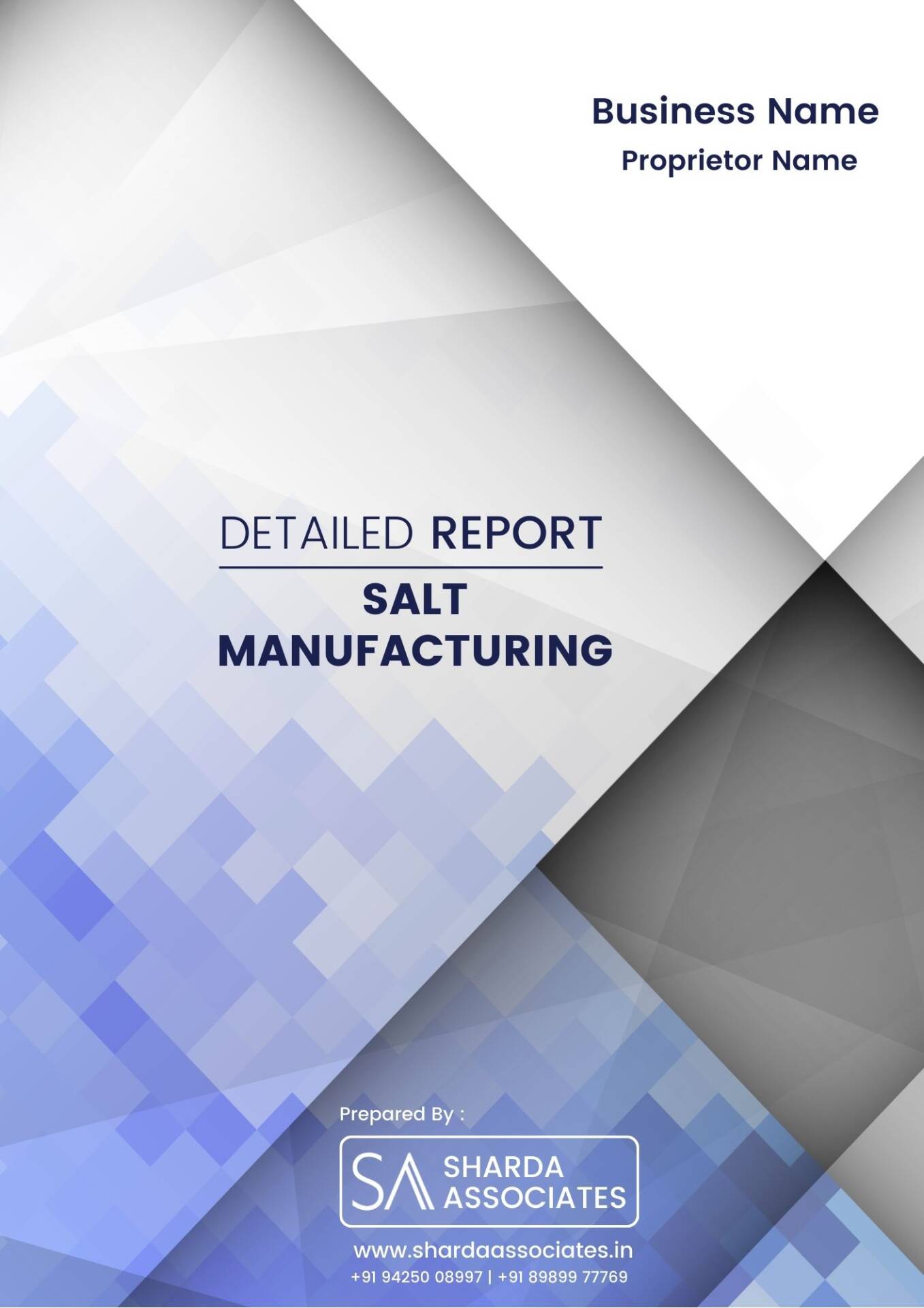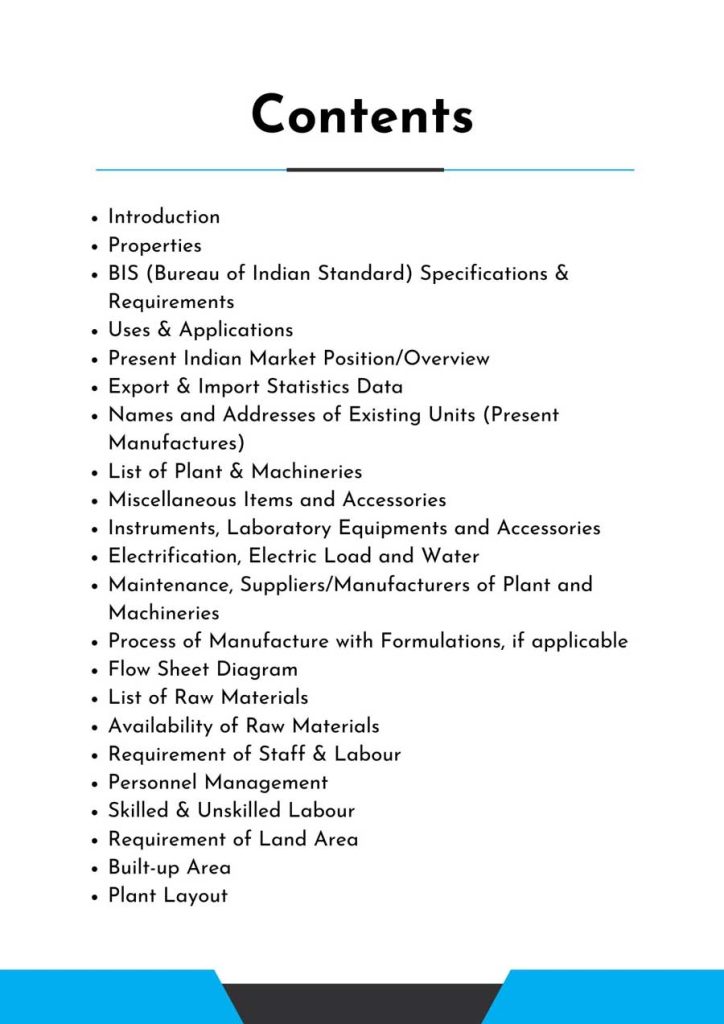Feasibility Report On Salt Manufacturing
Salt Manufacturing involves the extraction of salt from natural sources like sea water or salt mines. The process includes evaporation, crystallization, and purification. This vital mineral serves as a fundamental ingredient in various industries, such as food, chemical, and de-icing industries.
Introduction
Feasibility Report For Salt Manufacturing.
The food sector, manufacturing, and the creation of pharmaceuticals and compounds, all require salt. Salt is made using solution mining techniques or solar evaporation in salt lakes. Depending on how salt is treated, the grade of the salt and, consequently, its location, will change. Salt is the popular term for sodium chloride (NaCI), which is a substance that takes the shape of translucent cubic crystals. Numerous industries, including petrochemical refining, petrochemistry, organic synthesis, bulk medicine, and pharmaceutical production, use salt and its converted forms, such as chlorine, caustic, and soda ash.


Salt, a fundamental mineral, serves a plethora of essential functions in a variety of disciplines. Through the act of osmosis, salt improves flavours, balances tastes, and preserves items in cuisine. Beyond the kitchen, it is used in chemical processes, water treatment, and the production of a variety of products such as detergents and plastics. Saline solutions are used in medicine to help with wound cleaning and intravenous therapies. During the winter, salt is used to de-ice roads and pavements, improving traction and preventing accidents. It also functions as a natural exfoliator in cosmetics procedures and as a cleaning agent in home duties. The use of salt in ancient rites and currencies emphasizes its historical relevance.
The Salt manufacturing process, often known as salt production or salt-making, entails extracting salt from natural sources such as salt mines or evaporating seawater or brine. Salt is extracted from mines using mining operations such as drilling, blasting, and extraction, followed by crushing and purification processes to remove impurities. To make salt from seawater or brine, the water is collected in shallow ponds or pans and evaporation is aided by sun radiation, leaving behind salt crystals. After that, the salt crystals are harvested, washed, and refined to attain the desired quality and purity. Depending on the type of salt wanted, additional processes such as iodization, anti-caking treatment, or flavouring addition.

Feasibility Report Sample On Salt Manufacturing



Market Strategy of Salt Manufacturing
The market for industrial salts is predicted to increase at a compound annual growth rate (CAGR) of 6.43% from 2022 to 2030, from a size estimated at USD 15.3 billion in 2021 to USD 26.8 billion by 2030.
The large-scale production of caustic soda and chlorine is anticipated to increase the need for industrial salt in the upcoming years. Given that it is utilised by numerous industries, the product’s demand is anticipated to increase in the upcoming years. Industrial salts are mostly used for water treatment and agricultural chemical processing.
Industrial salts are frequently employed as de-icing agents on sidewalks, platforms, and roadways. The freezing point can be lowered by industrial salts, which melts the ice. It holds the second-largest market share for industrial salts overall. The salt used for de-icing is of the lowest grade and contains more contaminants than grades used for other purposes. Because there are chilly climates everywhere, industrial salts are used as a cost-effective de-icing solution. The aforementioned uses are anticipated to offer a wealth of growth prospects for the industrial salts market.



